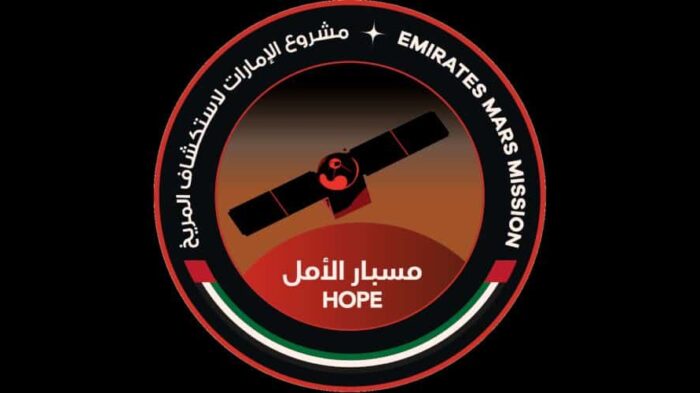The UAE Space Agency announced the Emirates Mars Mission in early 2014. The Mohammed Bin Rashid Space Centre in the United Arab Emirates is looking after the mission. The mission centres around the orbiter named al-Amal, meaning Hope. It launched from the Japanese island Tanegashima on July 20th 2020. Accordingly, it is now using its solar wings and is set for a 7 month, 306-million-mile-long journey to Mars. It’s currently --,--- from the Red Planet.
Where is Emirates Hope now?
Space in 3D Web App
Emirates Hope spacecraft is currently --,--- from the Sun, and --,--- from us.
Since last night Emirates Hope is --,--- --,--- Mars. Since you started looking at this page it is --,--- --,---.
Aim of the mission
Hope aims to study the atmosphere, weather patterns, and climate of the red planet. For instance, it makes use of the three on-board imagers and spectrometers for this purpose. Later, the instruments will compare hydrogen and oxygen levels at different levels of the atmosphere. This enables them to make reasonable predictions.
Why it is exciting
UAE is the first Arab country to initiate an interplanetary voyage. As the third Mars mission launched in just a month, it brings exciting future opportunities for space exploration. Furthermore, It intends to push innovation in STEM fields and encourage science and technology enthusiasts to follow their passions. The orbiter will arrive in February 2021, marking the nation’s 50th anniversary.
In the coming months, a team will use Trajectory Correction Maneuvers (TCM) to monitor and adjust the probe’s course towards Mars. In addition, the team will periodically check the probe’s instruments to ensure that they are ready and operational when the probe arrives.
The live 3D position of the Hope probe can be tracked in the simulation above.
*This Interactive 3D Simulation is built on data provided by NASA JPL HORIZONS database for solar system objects and International Astronomical Union’s Minor Planet Center. Distances and speeds are estimates based on this data.
Photo Credit and other: NASA, ESO/S. Brunier, NASA/JHUAPL/SwRI, NASA/JPL-Caltech, JAXA, University of Tokyo & collaborators, UH/IA, Solar System Scope/INOVE CC BY 4.0, Wikipedia/Creative Commons Attribution-ShareAlike License, icons8.com, Péter Eke, NASA/Goddard/University of Arizona/Roman Tkachenko, Wikimedia Commons, Hayabusa 2 Arrival illustration by Akihiro Ikeshita (permission granted), oNline Web Fonts, Font Awesome, Galaxy vector created by stories – www.freepik.com


